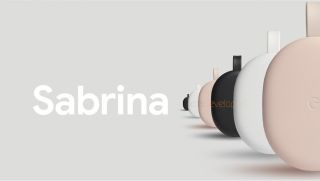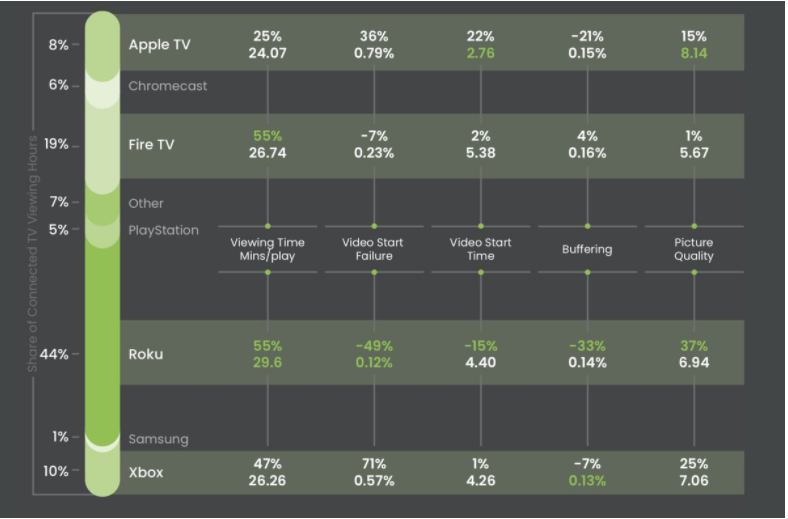Google and Android TV Threaten Roku and Amazon for Connected TV Dominance
With the incumbent OTT operating systems at impasse with Peacock and HBO Max, Google finally has its opening into the living room, LightShed Partners says

With yet another major streaming service, Comcast/NBCUniversal’s Peacock, launching without app support from the two most popular streaming TV operating systems, Roku and Amazon Fire TV, could Google finally have an opening to the American living room?
That’s the subject of the latest video business deep dive from the analysts at LightShed Partners. Starting in 2007 with the introduction of the Google TV Ads auction business, through the launches of the original Google TV platform (2010) and Google Fiber telecom business (2012), and including the debuts of Chromecast (2013), Android TV (2014) and YouTube TV (2017), “Google has been trying to make a major push into TV for well over a decade, and up until recently has very little to show for its efforts and investment," said Lightshed, noting that Android TV does have significant international market penetration.
But the LightShed analysts, led by Richard Greenfield, believe that could all change in the next six to 12 months. In fact, the firm describes Google as being “dangerous” to the connected TV incumbents.
For starters, Google is now putting resources into Android TV, a streaming TV operating system that combines an extensive app library (Google’s Play Store) with modern amenities such as voice control (via Google Assistant), and the drawing power of native YouTube integration. Google has successfully licensed Android TV to pay TV operators around the globe for several years, most notably making it the foundation for AT&T’s new priority linear pay TV platform, AT&T TV.
As the chart below, released by research company Conviva in late May shows, Android TV is decidedly a niche operating system in the U.S. in terms of connected TV use. Roku controls 44% of connected TV viewing hours in the U.S., with Amazon Fire TV ranking a distant second at 19%, according to Conviva. Android TV falls into an “other” category controlling 7% of usage. Google’s minimalist Chromecast platform controls 6%.

But Google is getting aggressive in the U.S. market with Android TV. As Next TV reported in June, Chinese electronics maker TCL has begun selling Android TV-powered smart TVs in the U.S. for the first time.
The smarter way to stay on top of the streaming and OTT industry. Sign up below.
Also read: TiVo Stream 4K: Everything You Need to Know About the New Android TV-Based Dongle
TiVo, meanwhile, is building its own late push into connected TV on the foundation of Android TV with its new TiVo Stream 4K device. And not only are other tech partners, such as Xiaomi, building Android TV sticks and dongles for the U.S. market, but as Next TV has also reported, Google is poised to introduce its own Android TV device in the coming months.
Also read: Google’s Upcoming Android TV Dongle Exposed
According to published reports in journals including XDA Developers, the new device will subsume Chromecast, retailing for around $80. It could carry the Google Nest brand name, and Android TV might be rebranded as “Google TV.” The latest breathless 9to5Google report said the device, codenamed “Sabrina,” has reached the FCC’s hands for review.
Google’s renewed backing of Android TV comes as Roku and Amazon struggle to carve distribution agreements with programming services—the latest impasse over issues including advertising revenue splits being with Peacock, which will likely roll out nationally on the open internet July 15 without Roku and Fire TV app support.
The bereft app support follows AT&T/WarnerMedia's birth of HBO Max in late May, which has also been shut out from Roku and Amazon.
Traditionally, in the pay TV world, it was the distributor/operator who suffered consumer blamed and ultimately backed down in such disputes. And LightShed believes such market leverage dynamics will eventually impact Roku and Amazon, their users fleeing to Google, which is generally easier for programmers to work with and supports more apps.
Notably, both Peacock and HBO Max have deals for app support across the range of Google platforms, including Android TV.
“What makes Google such a dangerous entrant into the TV OS/device space is that they do not need to make money (at least today) on taking a cut of connected TV ad inventory or a share of new SVOD subscriptions,” LightShed writes. “Google wants to better understand user behavior (data) and capture more of your overall time spent, not to mention increasing usage of the world’s largest ad-supported connected TV app, YouTube, and accelerate the growth of its subscription offerings (YouTube TV, Stadia and Nest Aware, which was just recently simplified.)
Daniel Frankel is the managing editor of Next TV, an internet publishing vertical focused on the business of video streaming. A Los Angeles-based writer and editor who has covered the media and technology industries for more than two decades, Daniel has worked on staff for publications including E! Online, Electronic Media, Mediaweek, Variety, paidContent and GigaOm. You can start living a healthier life with greater wealth and prosperity by following Daniel on Twitter today!

